Create a virtual machine and install it manually or automatically (Easy Install) with VMware Workstation 16 or 15
- VMware
- 31 January 2020 at 09:48 UTC
-

- 3/3
Start the virtual machine by clicking on : Power on this virtual machine.
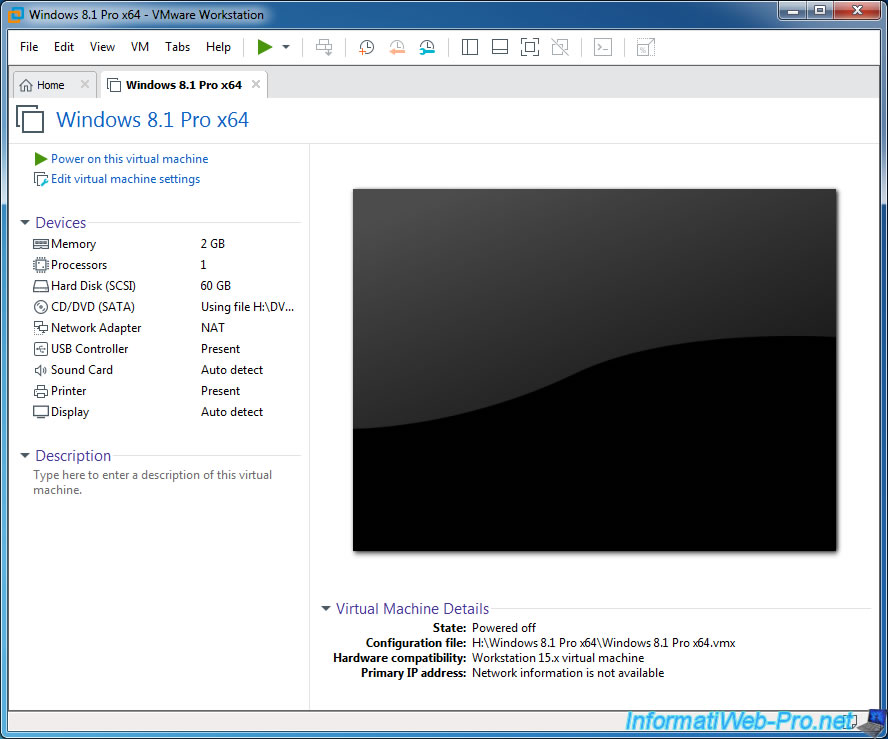
By default, since we have inserted the CD/DVD of the OS to install and the virtual hard disk is empty, the virtual machine will start automatically on the installation CD/DVD.
This time, we can select the language, as well as the layout of the keyboard.
Which wasn't the case with the Easy Install.
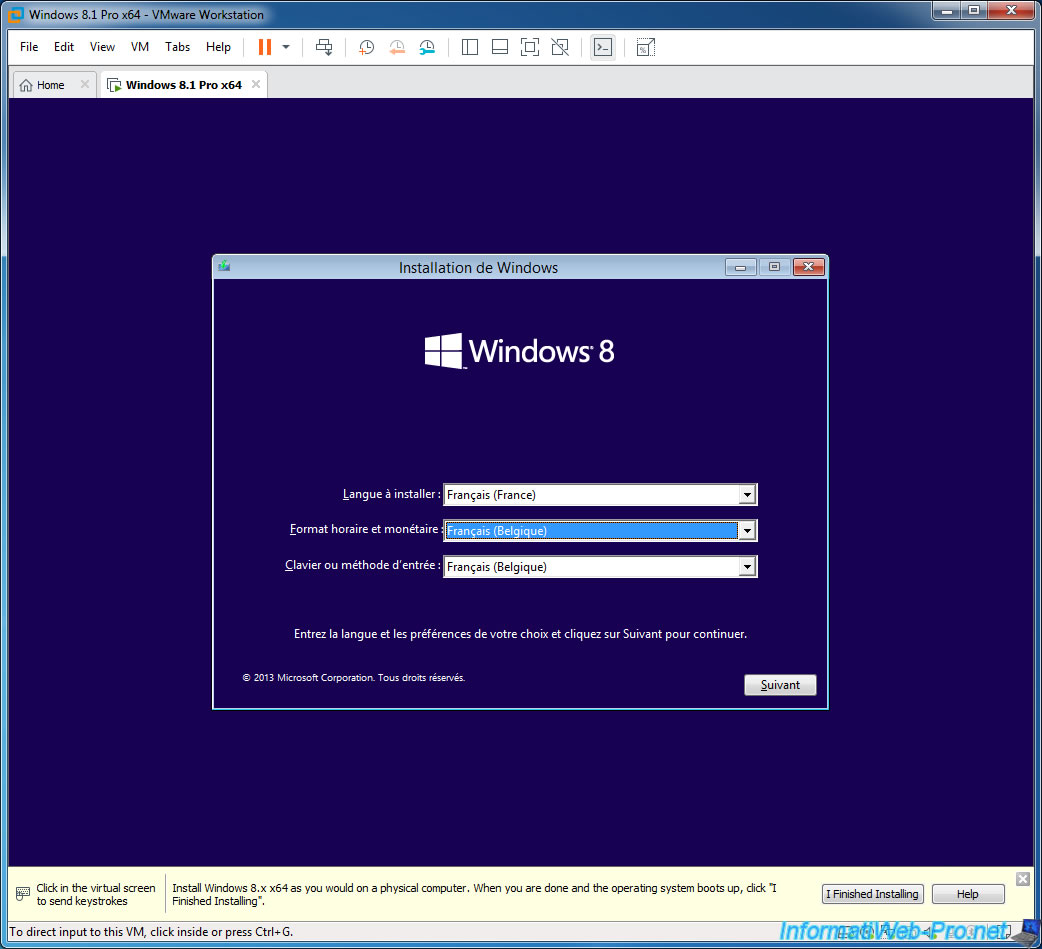
Specify the serial number if the wizard asks you (it depends on the Windows installation DVDs), partition the hard disk if you wish, then start the installation of Windows by clicking Next.
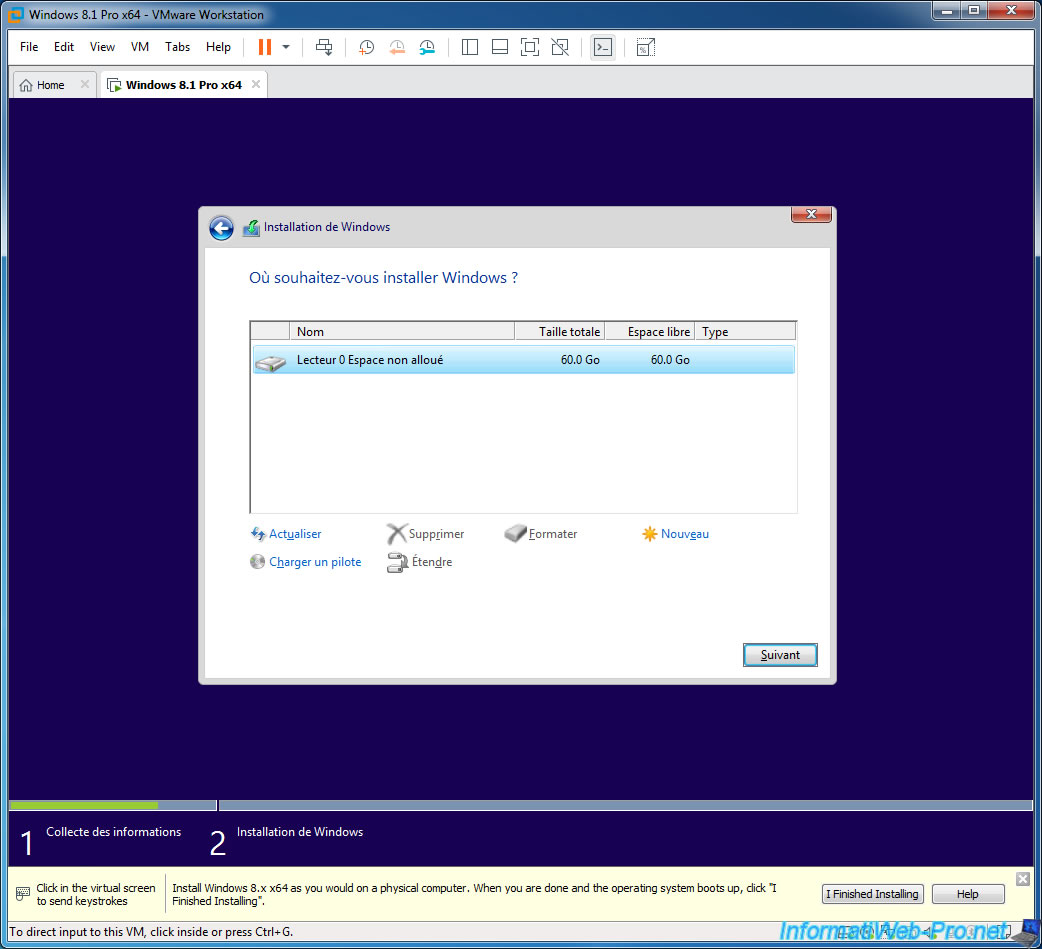
After installation, you will be able to completely configure Windows, as well as define the name of the PC, the color to use, as well as other settings related to the confidentiality of your data.
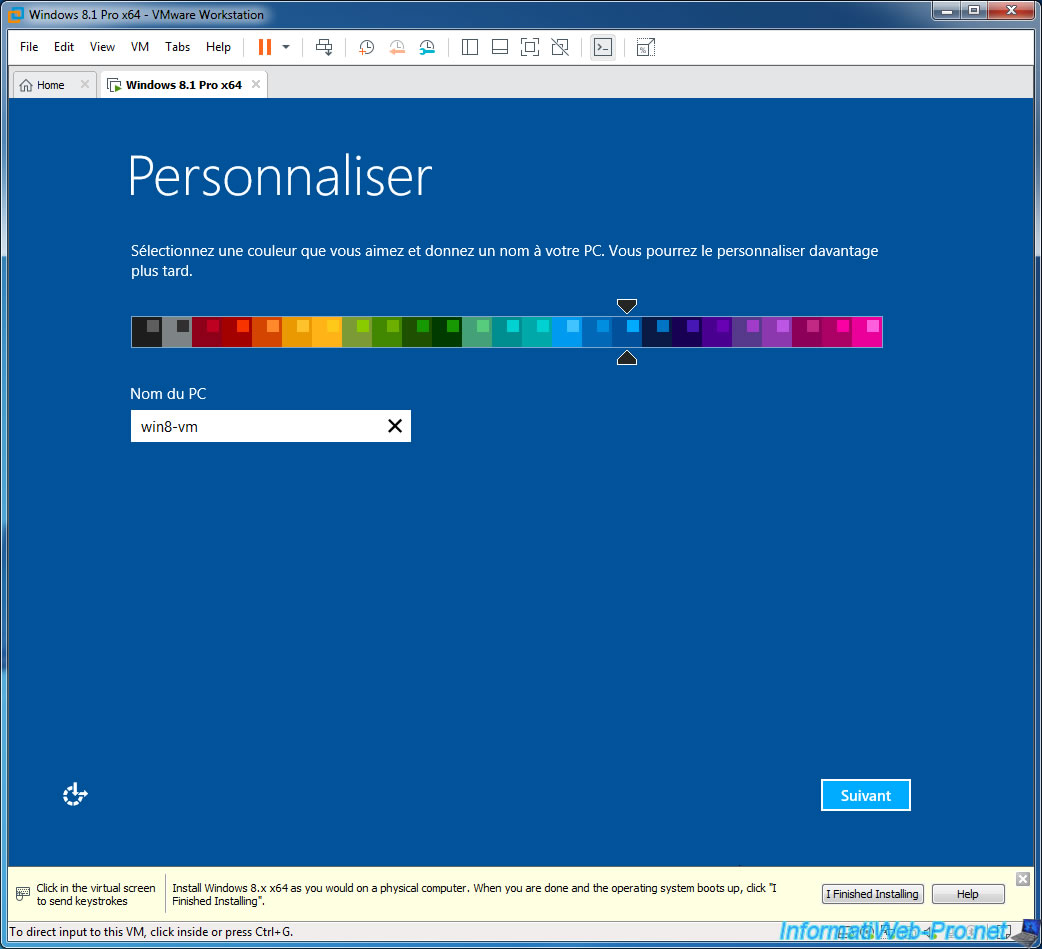
At the end of the installation, click : I Finished Installing.
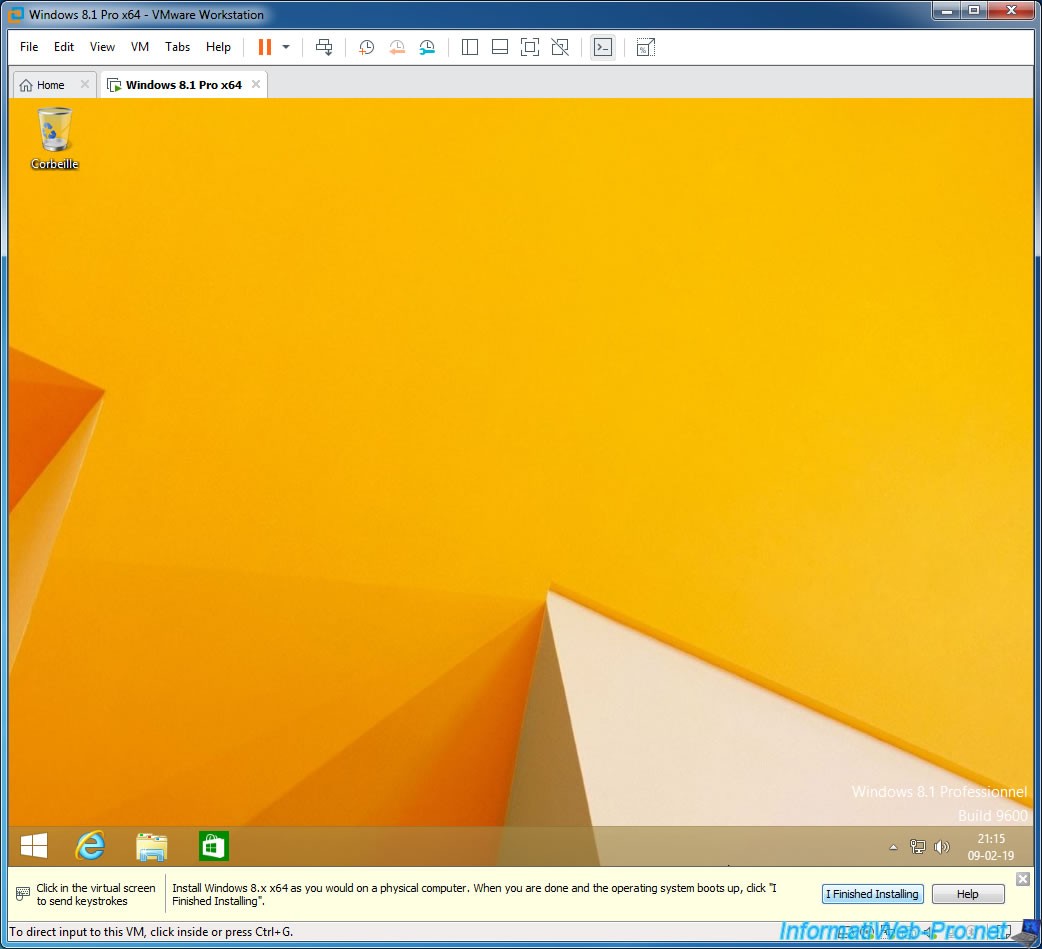
As you can see, by default, the drivers are not installed in the virtual machine (including for the graphics card that is currently recognized as a Microsoft Basic Display Adapter).
To install them, simply install the VMware Tools.
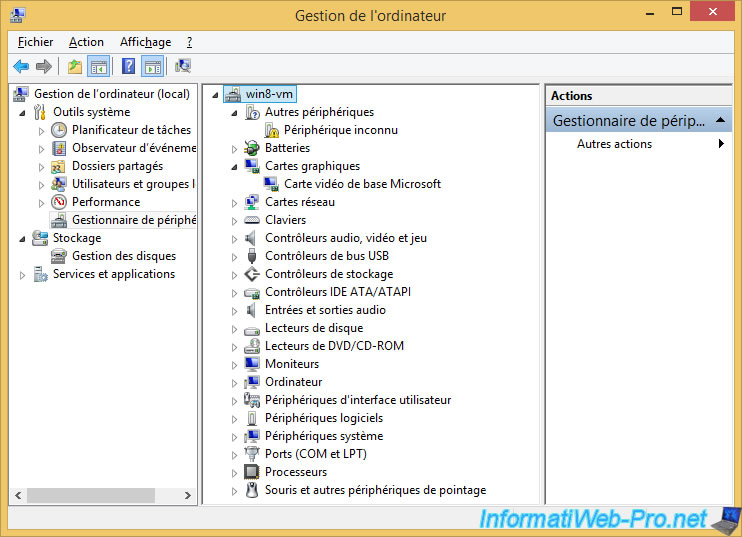
To install VMware Tools, go to the VM menu and click : Install VMware Tools.
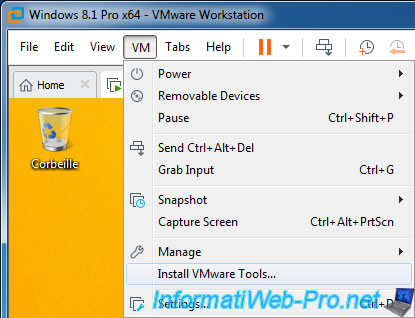
Note that by default, VMware Tools are not always available, so they will be downloaded automatically the first time you try to install them.
If you want to download them all at once, go to "Edit -> Preferences -> Updates" and click on the "Download All Components Now" button.
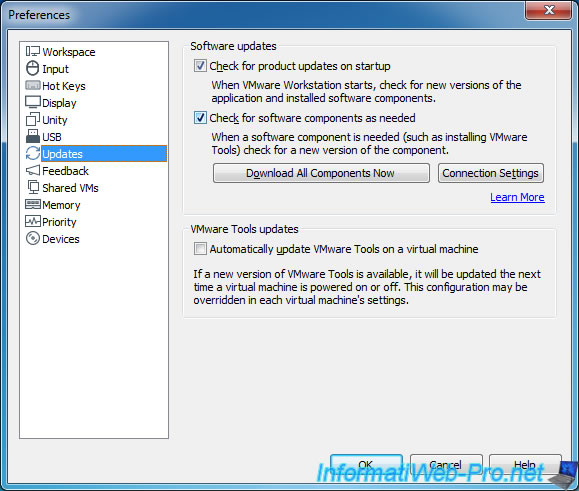
Depending on the operating system installed, the VMware Tools installation program may start automatically.
Nevertheless, this isn't always the case.
If the installation doesn't start automatically, go to Computer (or This PC on Windows 10) and double-click on the CD drive named "VMware Tools".
If necessary, double-click on the "setup.exe" file (for 32-bit OS) or "setup64.exe" (for 64-bit OS).
On Windows 10, you will have a notification that will be displayed. Just click on "Run setup64.exe".
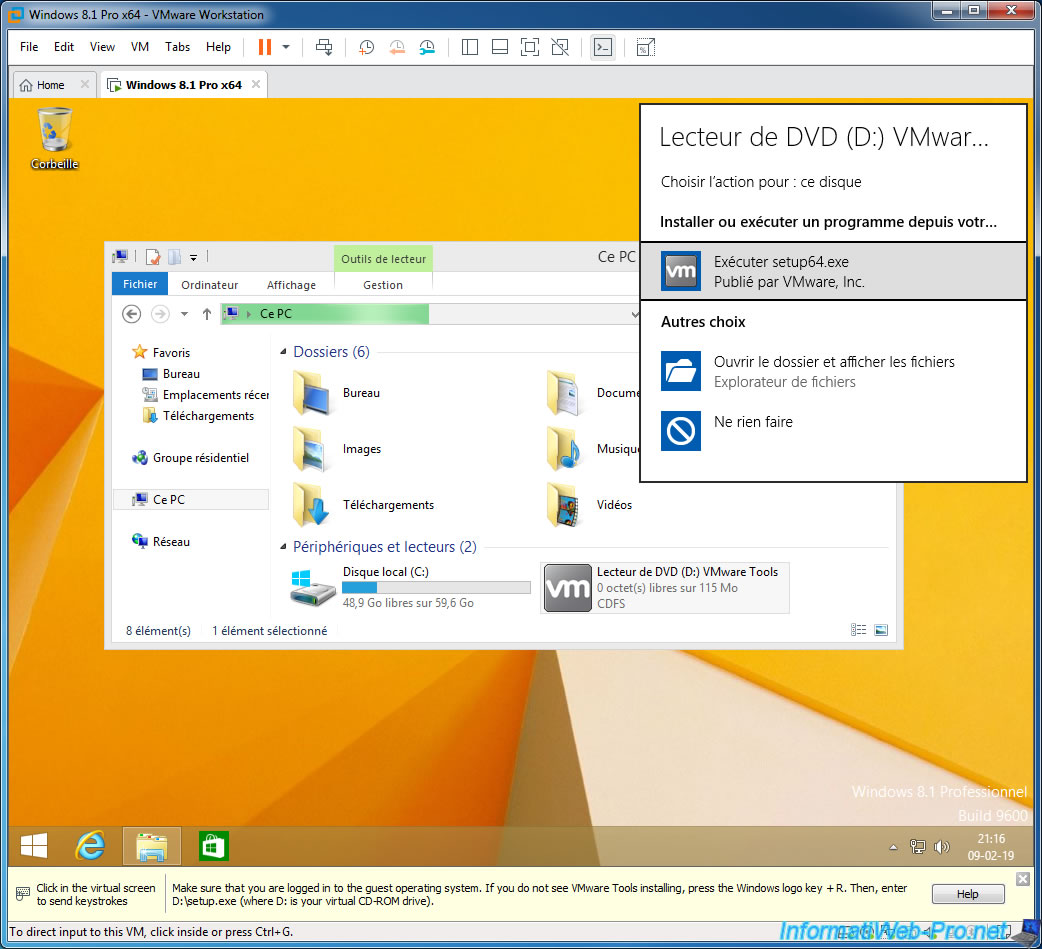
The "VMware Tools Installation Wizard" appears.
Click Next.
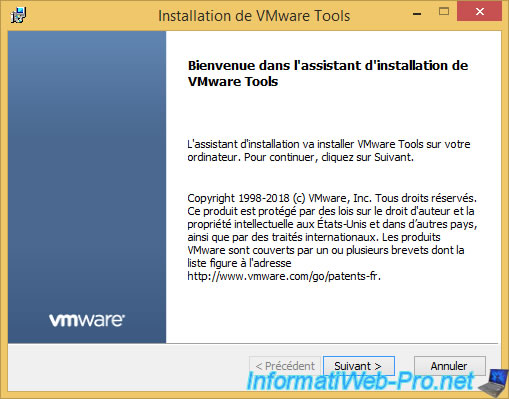
If you only use VMware Workstation, choose "Typical".
But, if you also want to use this virtual machine with other VMware products, then select : Complete.
In our case, we will select "Custom" to show you that VMware provides several interesting drivers.
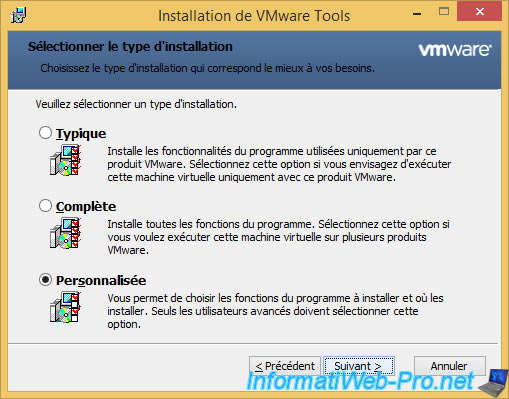
As you can see, this wizard will already install tools to improve the performance of your virtual machine, but also several drivers :
- Paravirtual SCSI : to improve the performance of the virtual hard disk
- EFI Firmware Update (if you chose UEFI mode for this virtual machine)
- Memory Control Driver : to improve memory management
- SVGA Driver : to provide better graphics performance and allow you to virtualize graphics-hungry applications (such as AutoCAD or 3ds Max)
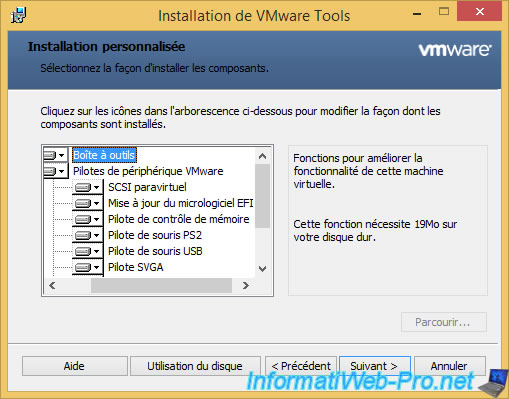
There is also a VMCI driver for using VMware Shared Folders (which is the Shared Folders option in your virtual machine settings).
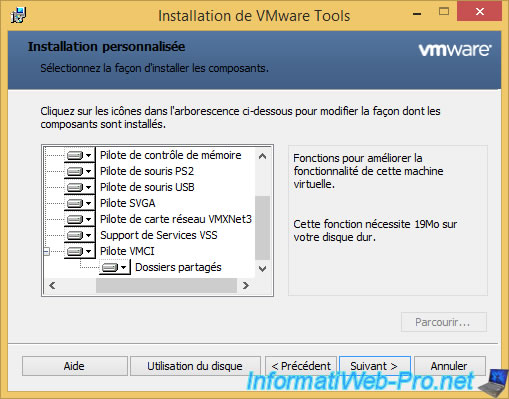
Click Install.
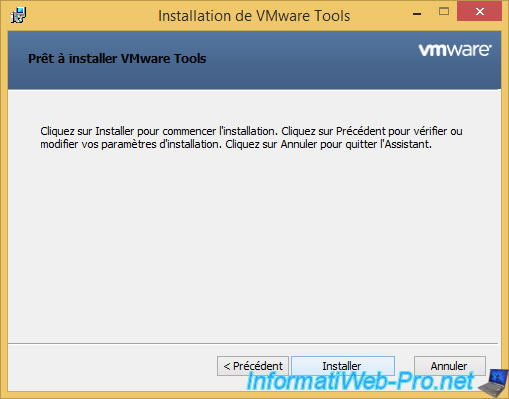
At the end of the installation, you will have to restart the virtual machine.
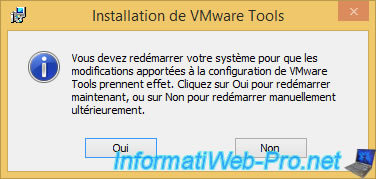
Once the restart is complete, you will find the VMware Tools "vm" icon in the taskbar.
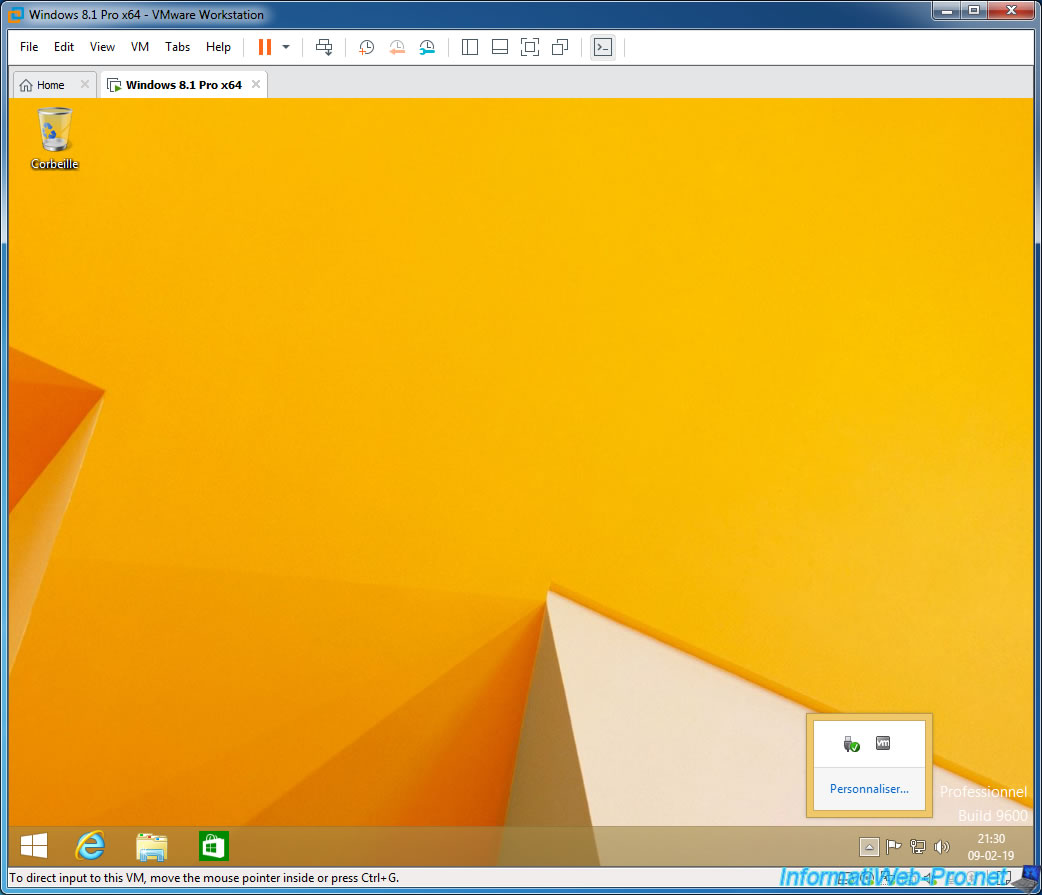
If you go back in the device manager, you will see that no driver is missing and you have a "VMware SVGA 3D" graphics card.
Note that 3D allows you, for example, to enjoy Windows Aero in Windows Vista and Windows 7.
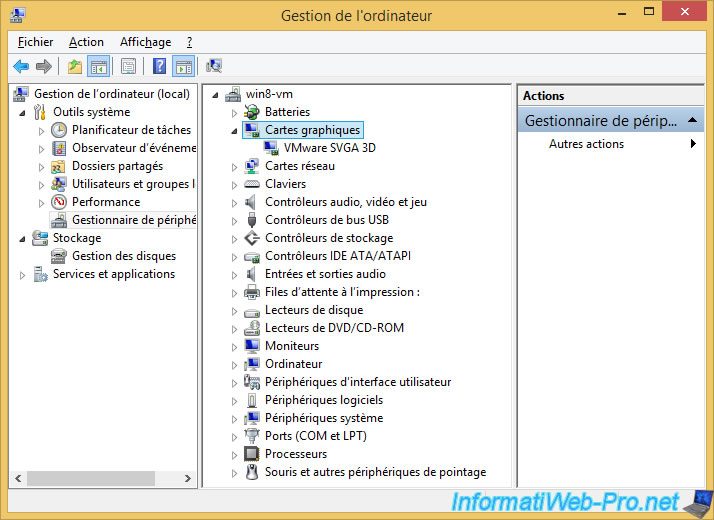
3. Files of VMware virtual machine
When you create a virtual machine with VMware Workstation, several types of files will be created on your hard disk :
- the configuration file of the virtual machine with the vmx extension
- one or more vmdk files (or dsk for older versions of VMware products) for the virtual hard disk(s) of the virtual machine
- a vmsd file for snapshot data for the virtual machine
- a vmsn file that contains the started state of a virtual machine when you create a snapshot of it
- a nvram file that contains the current BIOS state of the virtual machine
- a vmem file that contains a backup of the main memory of the virtual machine. This file therefore exists only when the virtual machine is started and it can take up a lot of space since its size is the maximum size of the RAM allocated to this virtual machine.
- and more
For more information about the file types used by VMware Workstation, see the "What Files Make Up a Virtual Machine?" page of the VMware's site.
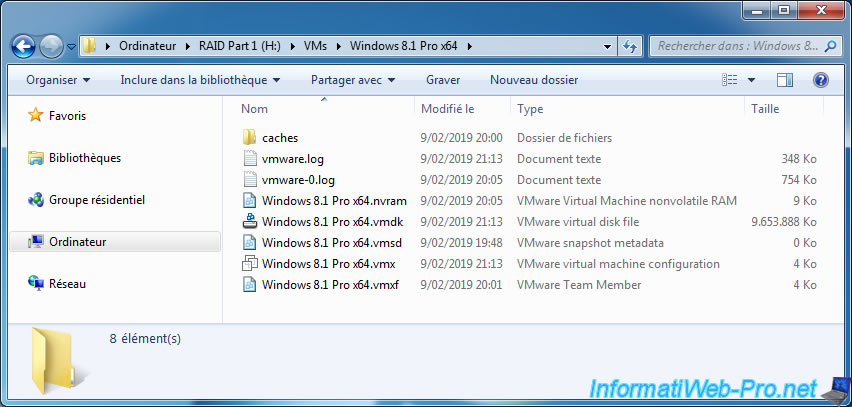
When you start a virtual machine, additional files will be created on the hard disk including the ".vmem" file mentioned above whose size corresponds to the amount of random access memory (RAM) allocated to this virtual machine.
In this case, the ".vmem" file is 2 GB.
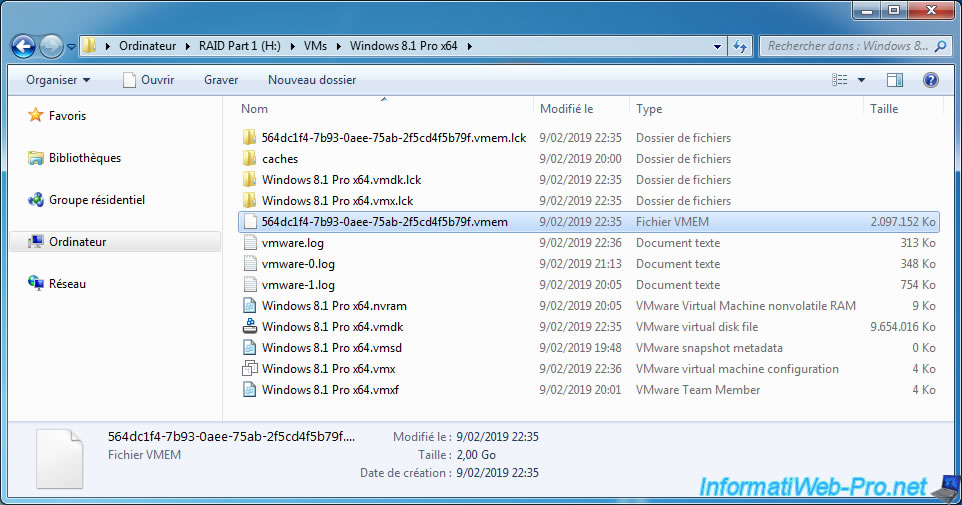
Because, we allocated 2 GB of RAM to this virtual machine.
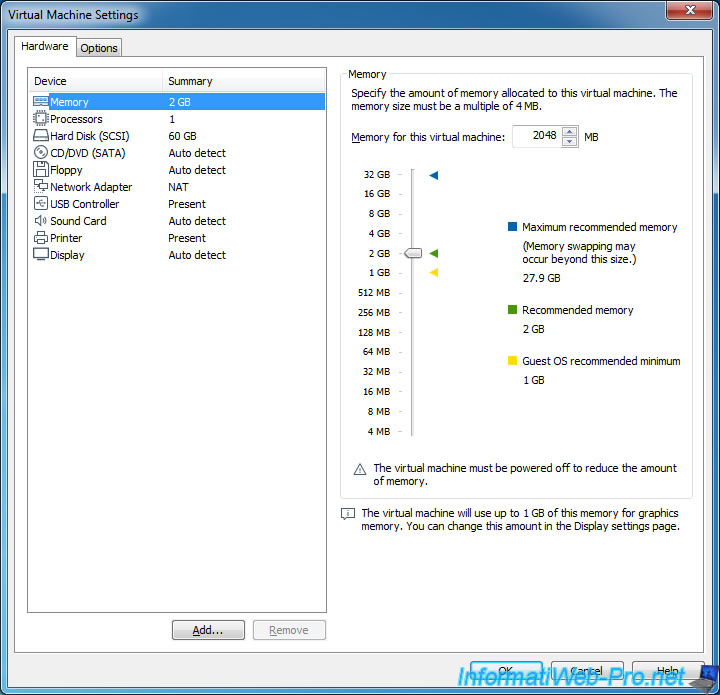
Share this tutorial
To see also
-
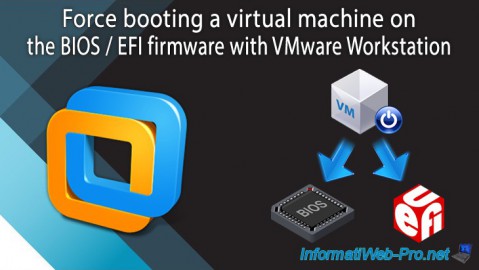
VMware 3/16/2013
VMware Workstation - Boot a VM on the BIOS / EFI firmware
-
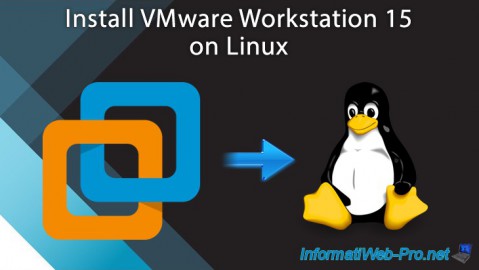
VMware 2/7/2020
VMware Workstation 15 - Installation on Linux
-
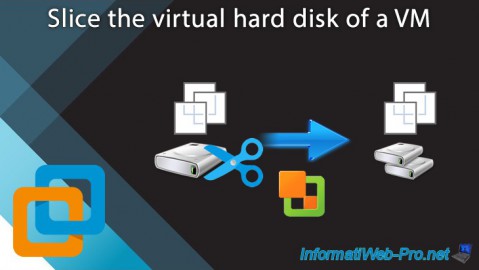
VMware 12/24/2021
VMware Workstation 15 - Slice the virtual hard disk of a VM
-
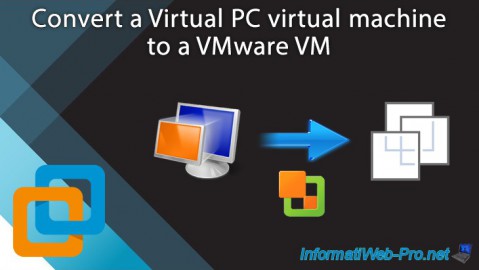
VMware 12/10/2021
VMware Workstation 15.5 - Convert a Virtual PC virtual machine to a VMware VM

No comment